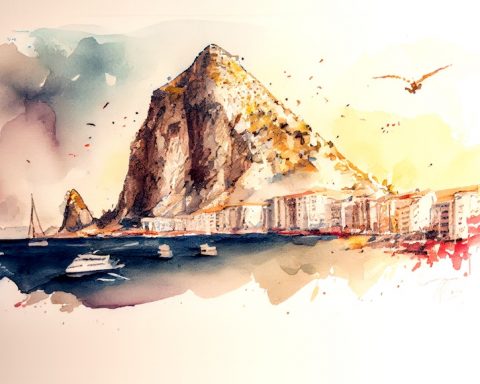On this National Day, and every National Day to come, we commemorate Gibraltar’s first sovereignty referendum of 1967, where it was overwhelmingly decided as a population to remain under British sovereignty. Commemoration is an important aspect in remembering Gibraltar’s history as it maintains a narrative of public memory. This article will focus on the different ways Gibraltar commemorates key events, whilst also highlighting how the work of the Gibraltar Heritage Trust and the UK based Friends of Gibraltar Heritage Society helps to preserve this.
Commemorative sites and monuments do not provide us with the perfect story of history, instead, it should be seen more as an expressive interpretation of historical events from the society that lived through them. For example, the steps in Devil’s Gap Road are more commonly known as the Union Jack Steps or Referendum Steps. This is because the steps were painted in the Union Jack pattern to commemorate the result of the 1967 Referendum; the same thing that National Day celebrates. These distinct colours, and of course, dominant flag, demonstrates the atmosphere of Britishness in Gibraltar in 1967. The very fact that the steps remain painted, and that National Day honours the same event as these steps, suggests that the aura of Britishness remains.
National day celebrates the decision of the Gibraltarian people to remain with Britain, so it commemorates both cultures. The Evacuation Memorial does just this. Whilst it honours the experiences of the Gibraltarians who were displaced during World War Two, it also gives thanks to the British for their ability to keep the Gibraltarians safe during those dangerous times. This is the same with much of the military history commemorations in Gibraltar, where British military strength appears to be celebrated and memorialized as being the reason why Gibraltarian’s survived all these years. For example, the countless batteries and defences located all around Gibraltar, some preserved in their original conditions thanks to the Gibraltar Heritage Trust and the Friends of Gibraltar Heritage Society, are examples of this mix of cultures. The form of the batteries that we see today date from the British period and are named after British personnel, such as Victoria Battery after Queen Victoria. Yet, these Batteries and their guns remain in Gibraltar as a signal of our strength and perseverance, whilst also acknowledging British sovereignty.
However, National Day also honours Gibraltar’s unique multicultural history. The Moorish Castle is a popular site and was first built by the Moors in around 1160, and was expanded in 1333. Since then, various nationalities have occupied it, but it remains uniquely Gibraltarian in the sense that it will never be taken away from us. The Tower of Homage displays Gibraltar’s ‘battle scars’ from different attacks and sieges, but it never fell, in the same way that Gibraltarians survived despite countless attack attempts.
Similarly, The Convent, home to Governors of Gibraltar since 1728, was built in 1471 and was originally a convent of Franciscan friars, hence its name. The friars came from Spain during Charles I reign and were granted a plot of land in La Turba where poorer Gibraltarians lived. After British occupation in the 18th century, the friars left, and the convent was rebuilt to reflect Georgian and Victorian architectural design. The building was used as the official residence of the Governor of Gibraltar since 1728, and it remains in this system in the present day. This site is full of British iconography, specifically the Changing of the Guards and the Guard Mount. Thus, this site which is a blend of different histories celebrates Gibraltar’s unique heritage. Without the combination of all these different histories, Gibraltarian culture and identity might be extremely different, we might not even use Llanito! This is why it is important to remember all aspects of history in Gibraltar, not just the British narrative, because everything has contributed to the formation of the culture that we have today.
It is thanks to the Gibraltar Heritage Trust and the Friends of Gibraltar Heritage Society that we are able to commemorate sites and monuments like these on such a special day like National Day. The GHT are a nonprofit organisation charged under statute with the preservation, promotion and conservation of Gibraltar’s Heritage. FoGHS are a society who are passionate about Gibraltar’s history, and their main mandates are to fund projects related to Gibraltar’s history and to engage people around the world with Gibraltar’s rich heritage. It is only through my summer placement with them over the last two years that I am able to write about Gibraltar’s history. I think on such a special day like National Day, everyone should have the opportunity to learn and witness Gibraltar’s history and think about why our culture has developed this way today. I encourage everyone to go out and learn about our unique history, and I hope this article has inspired you to do so.











